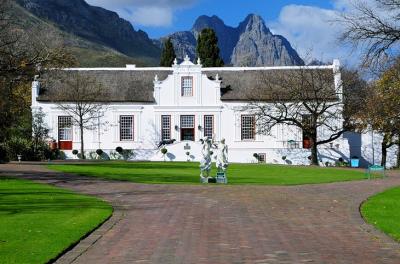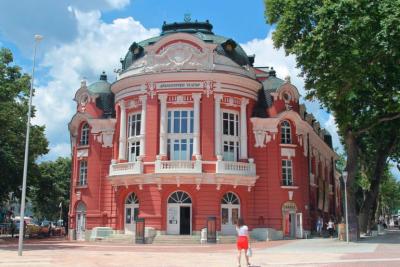20 Results in category Urban exploration
Urban exploration is a term that been used for activities like urban rock climbing, urban spelunking, building hacking or urban caving. It is also used with reference to draining while exploring drains.
This activity poses as a risky task in terms of physical as well as legal complications. There are several associated activities with urban exploration that violate laws regionally and locally, sometimes going against anti-terrorism regulations, and even considered as trespassing and privacy invasion.
Targets of exploration
The exploration targets can be of various types depending on the country. From amusement parks, factories, fallout shelters, schools, sanatoriums, to places like power plants, hospitals, missile silos, asylums, rugged houses, etc.
The term haikyo (meaning ‘abandoned place’) is commonly used in Japan in reference to ruins during urban exploration. Haikyo is common in Japan now because of the rapid industrialization, for example at Hashima Island, the damages of World War II, the bubble of real estate of 1980s and the tsunami and earthquake at Tōhoku in 2011.
Active buildings
Urban explorations also depict the practice of exploring buildings which are in use or active, this includes gain of access to safely secured or restricted or ‘member-only’ places, elevator rooms, roofs, mechanical rooms and other places that are normally unseen in building.
Catacombs
Catacombs have been discovered around the globe at places like, Naples, Paris, Odessa and Rome and have been extensively explored. In Paris, the Mines have been discovered to comprise of underground tunnels, now restricted from public view just like catacombs, and have been named ‘Holy Grail’ because of their historic nature. The individuals who explore these are referred to as cataphiles.
Sewers and storm drains
Draining, i.e. entering storm drains is an activity that comes under urban exploration. This activity has grown in popularity to an extent that there are now groups especially dedicated to draining, the Cave Clan from Australia for instance. Draining follows many presets and guidelines, the most important one being ‘If it rains then no drains!’ A rainfall increases the hazards of getting trapped or washed away, and even getting killed. There is a subset of urban explorers who explore sewers and are at times the only way to access caves and similar subterranean features. While it is well known that sewers are a symbol of danger owing to the high level of risk of getting poisoned by the build-up of harmful and toxic gases, mainly hydrogen sulphide and methane, explorations still go on with numerous fatal accidents happening time and again around the globe with fortunate people who manage to overcome the toxic gases.
Utility tunnels
There are utility tunnels in Zurich, Switzerland’s Universalities and also other places like hospitals wherein harmful steams of high temperature are distributed from a common heating plant to buildings for heating and cooling purposes. The pipes used for this are generally built through utility tunnels and are built in a way to be accessed only for maintenance works.
At some steam tunnels the floors are dirty, with poor lighting conditions and also where the temperatures are never below 45oC or 113oF, while some of these tunnels have floors of concrete and with bright light conditions and moderate temperatures. Most of the steam tunnels possess airborne asbestos and also have intake fans of large sizes that bring in fresh air and push out the hot air. However, breathing protection is often required while entering them to avoid respiratory complications.
Urban exploration has gained an increased popularity which is now evident through high media attention. For example, shows like Urban Explorers on Discovery Channel. Ghost Hunting of the Atlantic Paranormal Society, MTV’s Fear, etc, have a great number of audiences. The movie After... of 2006 is a thriller film that is set in the underground subways of Moscow. It depicts urban explores that are stuck under extreme conditions. The 5th and 6th editions of Hackers on Planet Earth Conference, also have displayed urban exploration with numerous media content complementing the activity. Cities of the Underworld, started in 2007, is another contributing series that successfully completed three seasons on air History Channel.
Russia’s most famous street—the Champs-Élysées of St. Petersburg—runs for 3 miles (5 kilometres) through the city’s historic centre from the Admiralty Building to Alexander Nevsky Lavra.
Enjoy the magical evening in Athens and capture the city's transformation into a colorful fairytale on this evening photoshoot tour
The remains of a doomed Antarctic plane, buried beneath layers of ice and snow, await those willing to do a bit of digging.
Built for the Ibero-American Exposition of 1929 to celebrate the regions of Spain, the Plaza de España is an impressive semi-circular pavilion surrounded by colonnades.
For many visitors, Singapore’s Chinatown is the sightseeing focus of the city, home to traditional shophouses, temples, and cultural heritage. Take a wander down the atmospheric streets, dropping into shophouses to see what’s for sale.
Stellenbosch is one of the most picturesque towns in South Africa. A mosaic of farms, old oak trees, and white-washed Cape Dutch dwellings, it's one of the best-preserved towns from the era of the Dutch East India Company.
A top Singapore sight and architectural wonder that’s home to more than 160,000 plants, the Supertree Grove offers shade during the day, a light-and-sound spectacular at night, and panoramic city and garden views.
Lifting you 540 feet (165 meters) into the air, the Singapore Flyer is Asia’s largest observation wheel, providing amazing panoramic views of the city, the sea, and the surrounds from one of 28 capsules.
The sun-splashed favourite of local Bulgarians heading out of Sofia and Plovdiv for the summer, Varna is much more than just your run-of-the-mill resort town on the edge of the Black Sea.
When Japan emerged from centuries of isolation in the mid-19th century, Yokohama was a tiny seaside village, home to only 100 people or so.





.jpg)




